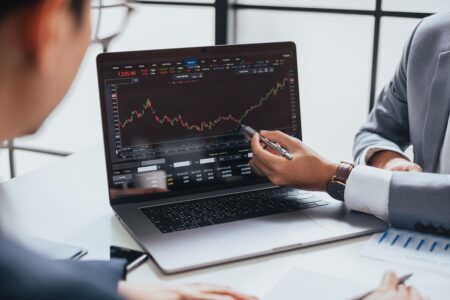The U.S. economy is at a crossroads in early 2025, with tensions simmering between the Federal Reserve and the newly minted Trump Administration. Fresh tariffs on Canada, Mexico, and China, tightened immigration policies, and an unexpected wildcard—Elon Musk’s call to audit the Fed—are muddying the waters for monetary policy.
With a potential inflation resurgence looming, the Fed is poised to continue its pause on interest rate cuts, waiting for clarity on how these bold moves will play out. Here’s what this standoff means for the economy—and your wallet.
A Robust Economy Meets New Challenges
The U.S. economy is humming along nicely in February 2025. GDP growth is tracking at a solid 2.3% year-over-year, unemployment is low, and consumer spending remains resilient. Yet, inflation is the fly in the ointment. Recent shocks like the H5N1 bird flu spiking egg and chicken prices are keeping inflation above the Fed’s 2% target. Against this backdrop, the Trump Administration’s early policy salvo is raising eyebrows—and stakes—at the Fed.
Since taking office, President Trump has wasted no time flexing executive muscle. On February 1, he slapped 25% tariffs on imports from Canada and Mexico, citing immigration and drug concerns in a White House fact sheet, and added a 10% levy on Chinese goods. These moves, enacted under the International Emergency Economic Powers Act, aim to bolster American manufacturing but come with a catch: higher prices. Economists warn that tariffs could directly inflate costs for consumers and businesses, a concern echoed in Deloitte’s US Economic Forecast for Q4 2024, which predicts supply chain ripples could linger into 2027.
Immigration is the other half of this policy punch. Plans for mass deportations and beefed-up detention capacity, could shrink the labor pool. Brookings estimates this might shave 0.1 to 0.4 points off 2025 GDP growth—between $30 billion and $110 billion—while potentially nudging wages and prices higher. For the Fed, tasked with balancing price stability and employment, this is a double dose of uncertainty.
The Fed’s Cautious Stance
So far, the Federal Reserve is playing it cool. After trimming rates three times in late 2024, it held steady at 4.25% to 4.50% in January, with the FOMC now penciling in just two cuts for 2025—down from four—according to Morningstar. Governor Adriana Kugler hinted at this wait-and-see approach, noting the need to monitor risks before acting, per Reuters. Translation: the Fed wants hard data on how tariffs and immigration curbs hit inflation before touching rates again.
Deloitte’s scenarios paint the picture. In their baseline outlook with 50% odds, tariffs keep inflation sticky, prompting a rate-cut pause until mid-2027, with rates settling at 3%-3.25% by 2028. A milder scenario at a 30% chance sees cuts resume if tariffs fizzle, while a harsher one at 20% likelihood flags rate hikes in 2026 if inflation spikes to 3.7% For now, steady rates seem the Fed’s safest bet.
The Audit Wildcard
Then there’s Elon Musk, stirring the pot from the sidelines. At the Conservative Political Action Conference on February 20, the Tesla titan floated auditing the Fed’s monetary decisions—a move beyond its routine financial oversight by the Government Accountability Office, according to Reuters. With his clout in Trump’s Department of Government Efficiency and a history of Fed critiques—like calling it “absurdly overstaffed” on X last May—Musk’s push could rattle the central.
Fed Chair Jerome Powell isn’t amused, seeing such audits as a veiled attack on the bank’s independence, as reported in Investopedia. If Musk’s idea gains traction, it might make the Fed even more gun-shy about rate moves, fearing political blowback. It’s a surreal twist: a private citizen amplifying the stakes in a high-stakes policy clash.
This tug-of-war has big implications. Tariffs and immigration restrictions could juice inflation, hitting consumers with higher costs for groceries, gas, and goods. The Fed’s pause on rate cuts keeps borrowing costs elevated, potentially cooling housing and business investment—though a softening housing market might ease services inflation. Musk’s audit talk, meanwhile, adds a layer of political pressure that could paralyze Fed decision-making.
For now, the Fed’s holding the line, waiting for the dust to settle. But as Trump’s policies roll out and Musk keeps prodding, the central bank’s tightrope walk gets trickier. Investors, businesses, and everyday Americans should brace for a bumpy ride—and keep an eye on the inflation gauge.
Read the full article here











